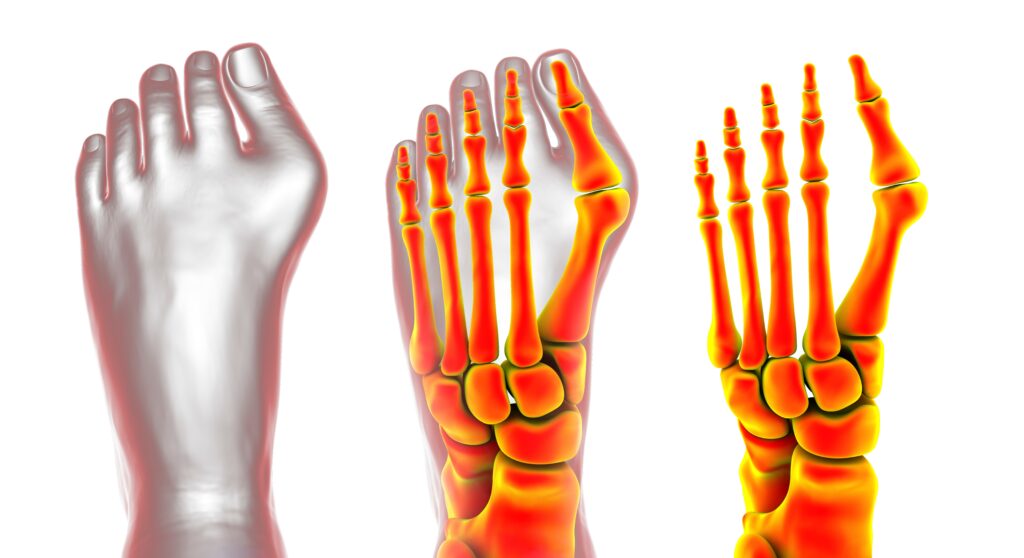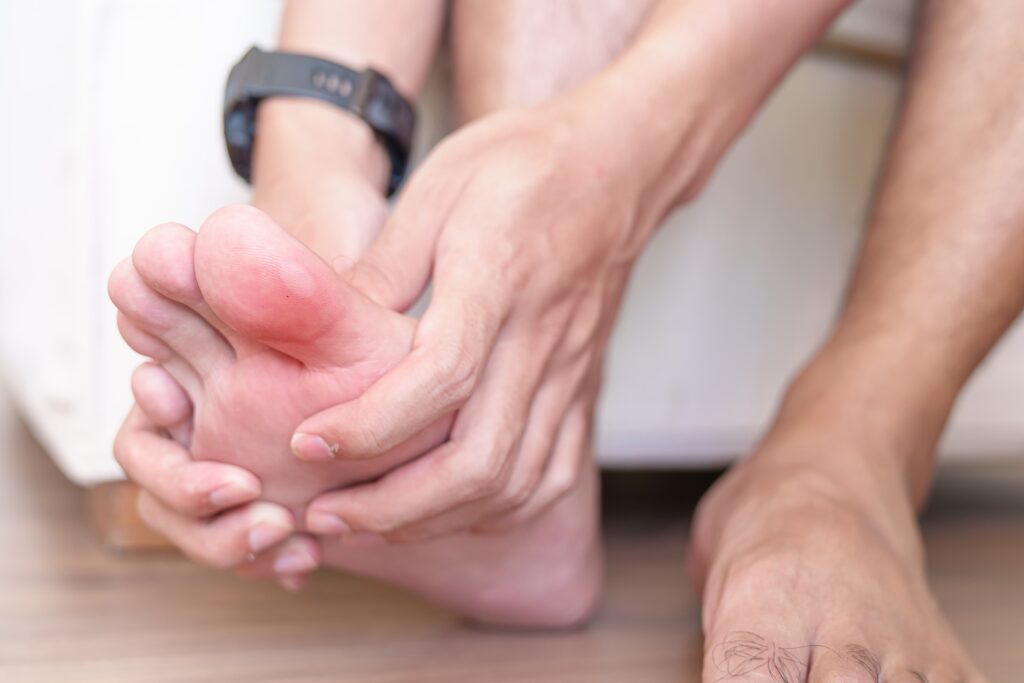As summer approaches, many of us look forward to shedding our heavy footwear in favor of sandals, flip-flops, and open-toed shoes. However, for those suffering from bunions, the transition to lighter footwear can bring about significant discomfort and exacerbate foot pain. Bunions, those unsightly and often painful bony bumps at the base of the big toe, can make summer activities less enjoyable.
To shed more light on this condition, we interviewed Dr. Edward Henrich, a beloved podiatrist at the Mason City Clinic who answered the most frequently asked questions about bunions and bunion surgery.

Dr. Henrich defines a bunion as “a bony prominence or a protruding bone right behind your big toe joint.” Bunions vary in size and severity, from mild to severe. They often result from hereditary factors, with some people developing them as young as 7 or 8 years old, while others may not see them until they are 70 or 80 (Extend Orthopedics)
Bunions are largely hereditary. However, other factors such as wearing narrow shoes, foot injuries, and certain types of arthritis can contribute to their symptoms. Dr. Henrich explains that “most of the bunions people get are actually hereditary… they are something that gets passed onto the gene pool” .
Bunions can present various symptoms including:
* Pain and tenderness around the big toe joint
* Redness and inflammation
* Hardened skin over the bunion
* Restricted movement of the big toe
* A burning sensation or swelling
Anyone can develop a bunion, though they are more common in women than in men. They are hereditary by nature and can be exacerbated by tight fitting shoes. Wearing wider shoes and using simple strategies to relieve pressure on the big toe helps some people “live with” the problem. But these workarounds are not an option for about 400,000 Americans who must turn to bunion correction procedures each year to relieve their pain.

Dr. Henrich advises that bunion treatment is usually necessary only when the bunion causes significant pain or interferes with daily activities. He states, “If it hurts you more often than not, it affects what you do, it affects what you put on, or it affects your job, then it’s worth fixing it”
For those with mild bunions, non-surgical treatments can help manage symptoms:
* Wearing properly fitting shoes with ample toe space
* Using bunion pads to cushion the area
* Taking anti-inflammatory medications
* Applying ice to reduce swelling
* Physical therapy and foot exercises
When non-surgical methods fail, surgery might be necessary. Dr. Henrich emphasizes that bunion surgery is about “correcting the bunion” by realigning the bones, ligaments, and tendons around the big toe joint. He highlights a new 3D correctional bunionectomy procedure that allows patients to recover faster and get back on their feet much sooner than traditional methods.
Traditional bunion surgery, called osteotomy, the bone is cut in half and the top part is reset and pushed over to get rid of the bump. This surgery can dramatically relieve the patient’s pain. But, because it does not address the unstable joint which caused the problem in the first place, there is the probability of recurrence. The newer procedure corrects the entire metatarsal bone – in all three dimensions, restoring it to its proper alignment, while naturally removing the bump and straightening the toe.
Recovery times can vary based on the type of surgery. Dr. Henrich’s innovative 3D procedure has revolutionized recovery, allowing patients to start walking within three days post-surgery. “This new 3D correction of bunionectomy allows me to correct larger bunions… I can get you back on the foot in three days,” Dr. Henrich shared during the podcast.
While you can’t always prevent bunions, certain measures can reduce your risk:
* Wearing shoes that fit well and don’t cramp the toes
* Maintaining a healthy weight to avoid excess pressure on your feet
* Performing foot exercises to strengthen foot muscles
* Visiting a podiatrist for early intervention if you have a family history of bunions
Bunions can significantly impact your quality of life, but with the right care and treatment, you can manage the symptoms and even correct the deformity. If you’re experiencing bunion pain, don’t hesitate to reach out to Dr. Edward Henrich at Mason City Clinic at 641.494.5340. As he notes, “The first step is to call our office, get x-rays, evaluate them, and see if this newer procedure or another treatment would work for you.”
Listen to our full podcast with Dr. Henrich:
Up-to-date. Down-to-earth. Close to home. Lots of great reasons to make Mason City Clinic
your first choice for all your family’s specialty healthcare needs.
250 S. Crescent Drive, Mason City, IA 50401
Tel: 641.494.5200
Toll Free: 800-622-1411
Fax: 641.494.5403